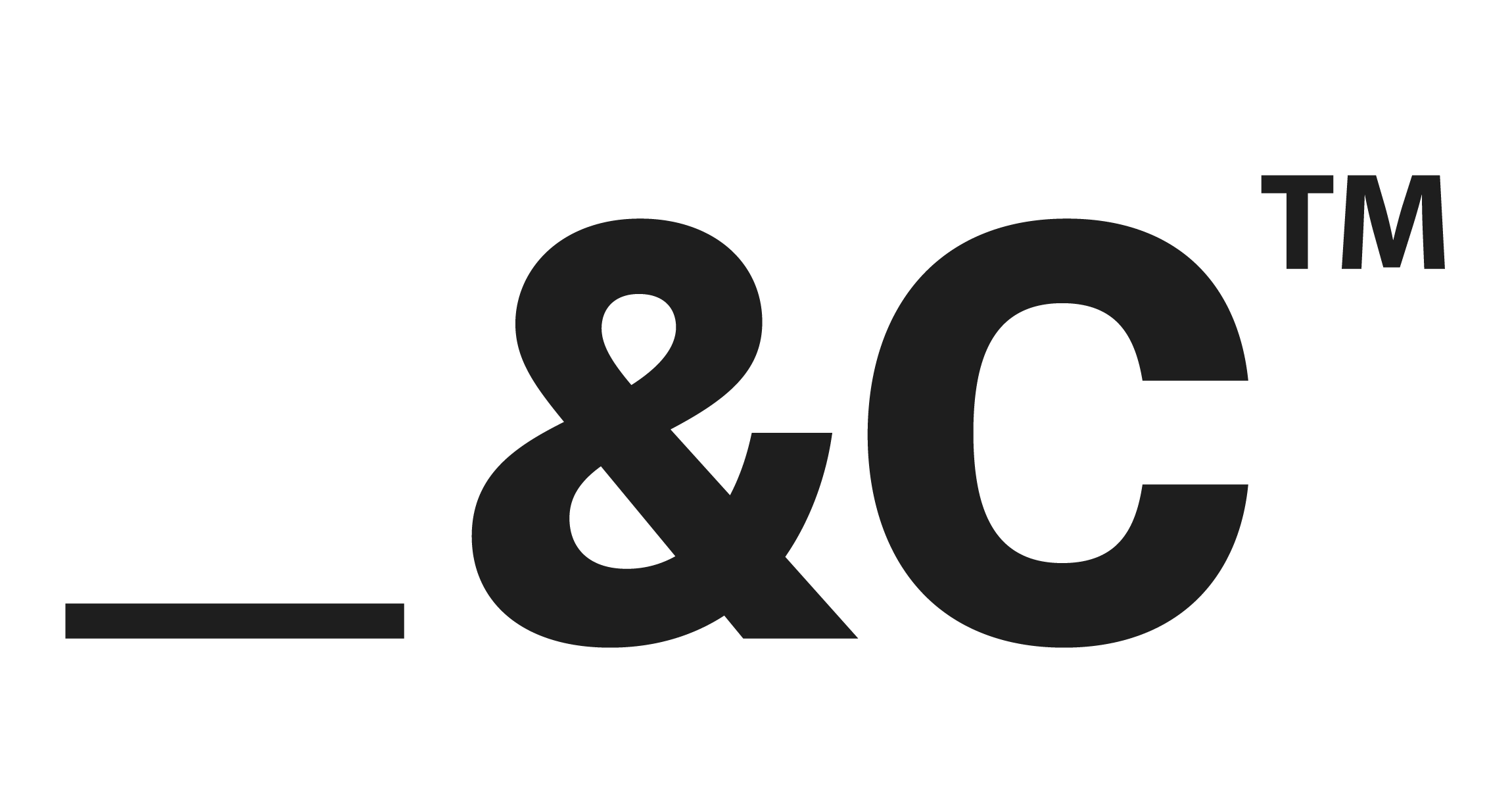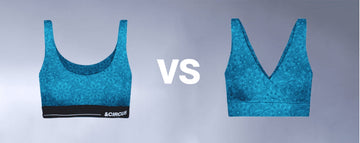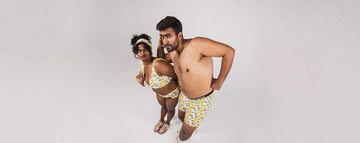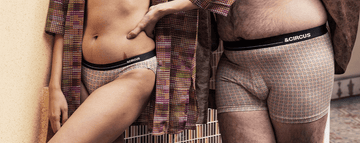Quick Listen:
In a quiet moment before surgery, Caroline Kennedy Alexander, founder of Loverose Lingerie, slipped on a favorite bra and underwear set, feeling it like armor against the uncertainty ahead. Post-surgery, her wardrobe offered only uninspired, matronly options nothing like the confidence she once drew from her intimates. Her story, shared in a Vogue Business article, echoes a truth for millions: clothing, especially innerwear, can profoundly shape how we navigate life's transitions. From pregnancy to aging, disability to recovery, adaptive clothing is redefining comfort and dignity, meeting people where their bodies are.
Uncomfortable underwear shouldn't steal your confidence. At Andcircus, we craft ultra-soft, sustainable Lenzing Modal Micro® innerwear for every body, XS to 5XL. From briefs to bras, our custom packs fit you perfectly. Shop risk-free with our 100% satisfaction guarantee and embrace comfort that includes everyone. #LoveEveryBody. Shop Now!
How Adaptive Clothing Is Redefining Comfort Through Life's Changing Stages
Adaptive clothing, at its core, is about accessibility clothing designed to accommodate the needs of those with physical disabilities, limited mobility, or temporary conditions like pregnancy or post-surgical recovery. According to Wikipedia, it's crafted for people with limb differences, vision or hearing impairments, developmental disabilities, or age-related challenges, ensuring they can dress with ease and feel a sense of belonging. For a brand specializing in eco-friendly micromodal innerwear, this means creating bras, panties, and loungewear that stretch, breathe, and adapt to bodies in flux whether it's a pregnant belly, a post-mastectomy chest, or the shifting needs of menopause.
The demand is undeniable. The global adaptive clothing market, valued at $48 million in 2023, is projected to reach $71 million by 2030, growing at a 6.0% compound annual growth rate, per a report from Absolute Reports. In the U.S. alone, retail sales hit $450 million in 2023, driven by an aging population and rising disability prevalence, notes Fortune Business Insights. As bodies change through pregnancy, illness, or time people crave apparel that marries function with style, without sacrificing the planet.
Innovation Meets Inclusivity in Fabric and Fit
Walk into any department store, and you'll see racks of one-size-fits-most intimates. But for those whose bodies don't conform to standard cuts whether due to a colostomy bag, arthritis, or a nursing schedule those racks can feel like a wall. Adaptive innerwear is tearing it down. Brands are weaving inclusivity into every seam, using micromodal, a plant-based, biodegradable fabric that's softer than cotton, stretches effortlessly, and wicks moisture to keep skin comfortable during hormonal swings or medical treatments.
Take maternity wear. A good nursing bra isn't just about stretch; it needs front closures for one-handed access, breathable fabrics for sensitive skin, and a fit that evolves from pregnancy to postpartum. Add in tagless labels and four-way stretch zones, and you've got innerwear that feels like a hug, not a hassle. Gender-neutral and plus-size options are also gaining traction, reflecting a broader cultural shift toward body positivity. In Europe, which holds a 45.4% market share in 2025, brands like Zappos Adaptive and Tommy Hilfiger Adaptive lead the charge, per Coherent Market Insights. North America follows at 29.6%, fueled by a disability prevalence of 14-16%, according to the CDC.
Then there's the eco-angle. Micromodal, derived from beech trees, isn't just soft it's sustainable, biodegradable, and a stark contrast to petroleum-based synthetics. Brands leaning into this fabric are meeting consumer demand for green choices without compromising on performance. It's a win-win: comfort for the wearer, kindness for the planet.
Real Lives, Real Impact
Consider the woman navigating post-mastectomy life, her body altered in ways that standard bras can't accommodate. Brands like Loverose Lingerie, highlighted in Vogue Business, are designing bras with adjustable straps and soft linings to restore confidence, not just function. Or picture an elderly man with arthritis, struggling with buttons. Adaptive underwear with magnetic closures or pull-on designs can mean the difference between independence and reliance on a caregiver. As Wikipedia notes, these garments account for age, disability type, and even caregiver needs, making daily routines less daunting.
Then there's pregnancy, a phase where bodies change almost daily. A micromodal nursing bra with adjustable waistbands and seamless stitching doesn't just fit it adapts, supporting a woman through morning sickness, engorged breasts, and the chaos of new motherhood. Customers of brands like AndCircus (a placeholder for similar innovators) rave about minimalist designs in neutral tones that feel chic yet practical, proving adaptive doesn't mean clinical. These stories aren't just anecdotes; they reflect a market shift toward clothing that evolves with its wearer.
The Challenges of Designing for All
Creating adaptive clothing isn't easy. Manufacturers face steep costs for specialized fabrics and small-batch production, especially when sourcing eco-friendly materials like micromodal. Size inclusivity adds another layer stocking everything from petite to 4XL without ballooning inventory costs is a logistical puzzle. And then there's the aesthetic hurdle: too often, adaptive wear leans toward utilitarian, risking the “hospital gown” vibe. Brands must balance function with beauty, ensuring a post-surgical bra feels as empowering as it is practical.
Educating consumers is another sticking point. Many don't realize adaptive clothing isn't just for disabilities it's for anyone navigating change. A pregnant woman might not think to seek out “adaptive” innerwear, yet she'd benefit from its flexibility. Brands need to market these benefits without stigmatizing physical differences, a delicate dance in a world quick to label vulnerabilities.
A Market Poised for Growth
Adaptive clothing isn't a niche it's a movement. With the market expected to hit $32.12 billion by 2032, growing at an 8.2% CAGR, per Coherent Market Insights, opportunities abound. Maternity and post-recovery wear are just the start. Brands are eyeing wellness and medical apparel, like bras for lymphedema or underwear for incontinence, as untapped markets. In Asia Pacific, which holds an 18.4% market share in 2025, rising awareness of inclusive fashion is fueling growth.
Eco-innovation is a game-changer. Modular designs think detachable straps or expandable panels let consumers customize their fit, reducing waste. E-commerce platforms are also stepping up, using AI-driven fit algorithms to nail sizing and sustainable packaging to seal the deal. As Absolute Reports points out, competition among brands is sparking innovation, from smart textiles to accessible retail experiences.
A Future Built on Comfort and Care
Adaptive clothing is more than fabric it's about dignity, independence, and meeting people where they are. Whether it's a nursing mother finding ease in a micromodal bra, a breast cancer survivor reclaiming her confidence, or an elderly person dressing without struggle, these garments tell stories of resilience. By blending sustainable materials with thoughtful design, brands are crafting a future where innerwear doesn't just fit the body it fits the life.
As the industry evolves, the message is clear: comfort shouldn't be a luxury, and sustainability shouldn't be an afterthought. Explore collections that move with you, from pregnancy to recovery and beyond, and discover how adaptive innerwear is rewriting the rules of intimacy with the planet in mind.
Frequently Asked Questions
What is adaptive clothing and who is it designed for?
Adaptive clothing is apparel specifically designed to support people experiencing physical changes due to pregnancy, disability, surgery, aging, or temporary conditions. These garments prioritize comfort, accessibility, and dignity featuring innovations like front closures, magnetic fastenings, and stretchable, breathable fabrics like micromodal.
How does adaptive innerwear benefit women during pregnancy and recovery?
Adaptive innerwear for women, especially during pregnancy and postpartum, offers features like seamless construction, one-handed nursing access, four-way stretch, and hypoallergenic fabrics. These designs provide much-needed comfort, flexibility, and support for evolving bodies while still maintaining style and confidence.
Why is micromodal fabric ideal for adaptive clothing?
Micromodal, a sustainable fiber derived from beech trees, is ultra-soft, breathable, and biodegradable making it perfect for sensitive skin and long wear. Brands use it in adaptive innerwear to offer all-day comfort without compromising on environmental responsibility or product performance.
Disclaimer: The above helpful resources content contains personal opinions and experiences. The information provided is for general knowledge and does not constitute professional advice.
You may also be interested in: Comfort-First vs Push-Up: How Preferences Are Changing
Uncomfortable underwear shouldn't steal your confidence. At Andcircus, we craft ultra-soft, sustainable Lenzing Modal Micro® innerwear for every body, XS to 5XL. From briefs to bras, our custom packs fit you perfectly. Shop risk-free with our 100% satisfaction guarantee and embrace comfort that includes everyone. #LoveEveryBody. Shop Now!







































